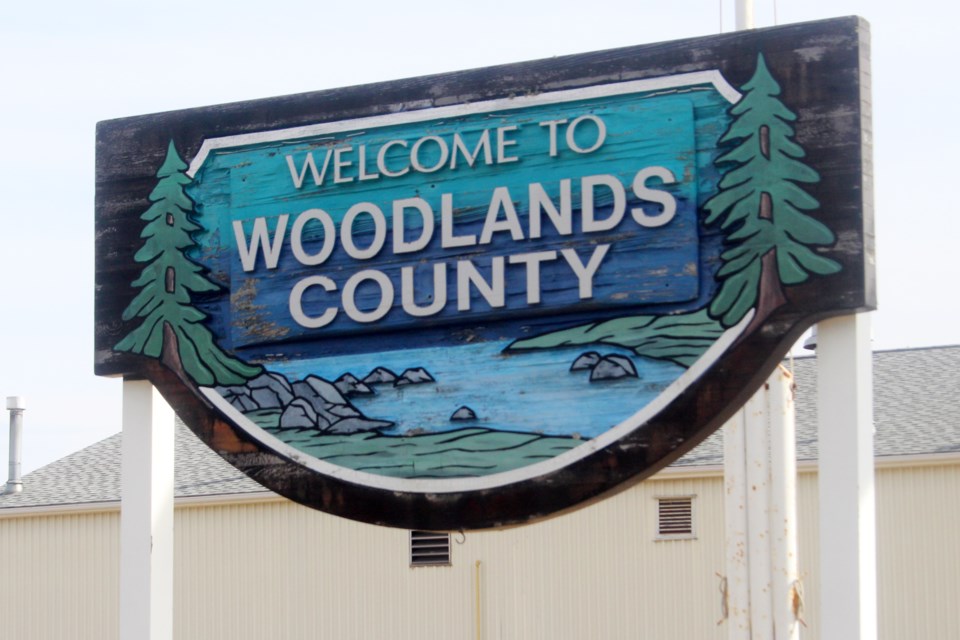As an incentive for local residents and businesses to pay their taxes by the usual due date of June 30, 2020, Woodlands County is looking at introducing a three per cent reduction on the municipal portion of residential and farmland property taxes and a one per cent reduction on the municipal portion of non-residential taxes.
During their May 5 meeting, Woodlands County councillors unanimously voted on a motion to pass first reading on a bylaw introducing the new incentive. It will return to the next council meeting on Tuesday, May 19 for further discussion.
“It’s something that we’ve never done before and hopefully don’t have to do again, but we have to do what we have to do,” said Coun. Dale Kluin, who put forward the motion.
The reason for the incentive is because on April 29, council passed all three readings on a bylaw pushing back the date when penalties would be imposed on unpaid taxes.
Instead of a penalty being applied on July 1 and Sept. 1, ratepayers now have until Dec. 1, 2020 to avoid a six per cent penalty on their outstanding tax bill.
Council had pushed back the penalty date in recognition of the financial hardships faced by residents and businesses from the COVID-19 pandemic.
At the same time, the county needs money coming in simply to operate. Thus, administration was directed at the April 29 meeting to come up with this incentive.
But how will this incentive affect the county’s finances? Director of corporate services Alicia Bourbeau said administration had calculated a number of incentives to determine the impact.
If 100 per cent of all residential and non-residential ratepayers in the county paid their taxes by June 30, the proposed incentive would end up costing the municipality approximately $231,000.
However, if only 75 per cent of residential ratepayers received the incentive, the cost would only be $30,000. And if 20 per cent of non-residential ratepayers paid on time, the cost would be $44,000.
In comparison, operating on a line of credit would cost approximately $70,000 in interest.
Bourbeau also noted that if everyone paid their taxes early, they would have more opportunity to generate interest off of that cash.
Mayor John Burrows acknowledged that this is not an easy situation the county finds itself in, but this was a creative solution.
“If you take interest that has to be paid on a debt and turn that back to the ratepayer, I can’t see that as a bad thing,” he said.
Mill rate
Councillors also passed the first two readings on a bylaw imposing the new 2020 mill rate, which will return to the May 19 council meeting for third and final reading.
The new tax rate is set at 3.0256 mills for residential and farmland properties and 11.1716 for non-residential properties.
It should be noted that the adjusted 2020 budget includes $19.573 million in expenses, of which $15.307 million is projected to come from taxes.
The education portion of the tax rate is set at 2.8042 mills for residential and farmland properties and 0.076 for non-residential properties. There are additional requisitions from the Barrhead and District Social Housing Association and the Lac Ste. Anne Foundation.
Bourbeau noted the tax rate includes the three per cent increase that council adopted as part of its plan for financial recovery. (As noted earlier, this will be forgiven for residential and farmland ratepayers who pay their tax bills by June 30.)
Coun. Jim Rennie begrudgingly made the motion to impose the new tax rate, noting that he disliked imposing even a small tax increase on top of an increased education requisition.
“But we need to make sure the municipality moves on and is able to offer the services that we do,” he said.
Coun. Ron Govenlock voted against the first two readings of the bylaw and a motion to go to third reading, which meant it could not be passed.
Govenlock said he was concerned about the lack of opportunity given to residents to review the county’s budget and the impact it will have on their lives.
“I’m looking forward to soliciting some feedback from businesses and residents as to what this should look like, and how it’s going to impact these businesses and this region,” he said.
“For that reason, I will be opposing … proceeding to third and final readings, because I want the public to have a voice and a say on in what happens on this budget in this municipality.”


.jpg;w=120;h=80;mode=crop)
